Mushrooms have been collected and consumed by people for millennia. It is interesting to note that ancient cultures did not primarily collect mushrooms for food; some did not collect edible mushrooms. This is likely because mushrooms are low in calories, and the calories spent collecting them led to a net-caloric deficit. On the other hand, in our modern world with its glut of calories, the low-calorie mushroom may be the absolute “choice” food to pick, especially if picking includes a calorie-expending hike plus some time doing what the Japanese call “Forest Bathing”. The cleansing air, breathing, touching and absorbing the forest microbiome have long been known to drop stressful cortisol levels, boost immune function, and lower blood pressure, giving one that mild narcotic feeling of well-being.
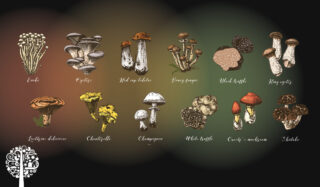
But for the Ancients, calories were things that counted. This was a life-and-death mathematical calculation in many areas, especially those northern and seasonal climes. The potential of deadly and debilitating poisonings made a diet including mushrooms even more questionable. Those same but vital questions, “Should I eat it?” are yet to be fully addressed today. Other than the Death Cap and a few other deadly amatoxins containing poisonous mushrooms, the most common mushroom poisonings, according to the North American Mycological Association (NAMA) poison records, are gastrointestinal and typically come from edible and often some of our most delicious mushrooms.
Why? Because all mushrooms are medicinal, and here’s how.
The Kingdom of Fungi is closely related to the Animal Kingdom; they share many of the same core characteristics, components and actions. The mushroom, we recognize, is just the “apple” that holds the seeds of a fungal organism, though, in the case of fungi, these “seeds” are spores. The mushrooms are made up of fungal hyphae, the same stuff that makes up the fungal organism, which lives and makes a home in and alongside its food. These fungal organisms are found in fossil records and are likely some of the first life that colonized land along with bacteria, yeasts (a form of fungi), algae, and viruses. Having evolved alongside these organisms, competing and cooperating for space and food, fungi have developed the mechanisms and chemistry needed to survive and thrive in this teeming environment. Like us, fungi have an extensive microbiome, but internally and externally. Some of these relationships are adversarial, and some are cooperative. Fungi, such as Penicillin, produce multiple compounds that can kill those adversarial organisms. But fungi go beyond that, providing metabolites and habitats in which other microorganisms can thrive. One of the most exciting things they do is modify and disrupt the signaling between bacteria, called Quorum Sensing. Bacteria produce biofilms, which provide a safe habitat for bacteria to grow and reproduce. The biofilm protects bacteria from immune attack and the chemicals used to disrupt and kill them. Developing these biofilms is critical for bacteria to reach a stage where they can become virulent. Fungi disturb this process, leaving the bacteria vulnerable to attack; this is a significant study area in combatting antibiotic-resistant infections.
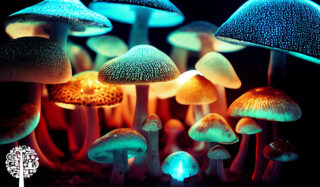
Then why do delicious edible mushrooms occasionally poison us? Other than food sensitivities and the like, all fungi have this innate ability to deal with bacteria. This can profoundly affect our microbiome, especially if we have consumed too many of these mushrooms. And in most cases, the reported gastrointestinal poisonings occur from overconsumption. These include mushrooms like “Red Tops” (Leccinum species), “Honey Mushrooms” (Armillaria species), “Shaggy Manes” (Coprinus species) and even our gourmet “Lobster” mushrooms (Hypomyces lactiflorum). In the case of Lobsters, the older ones that have turned a deeper crimson are the culprits. Some preliminary research has found that extracts from these older Lobsters whip out a variety of bacteria on culture plates. It has also been reported that undercooked mushrooms and mixing mushrooms and alcohol can have the same gastrointestinal effect. Regretfully, these “medicinal” mushrooms are not labeled with appropriate dosages and contraindications.
So, antibacterial action makes many of our mushrooms medicinal in nature. This is ubiquitous across the Kingdom. But wait, there’s more!
Clean Eating
Overall, edible mushrooms are a healthy choice. We noted that they are low-calorie, virtually containing very limited to no fats. They are low in sugars, but the sugars they have are medicinal. Mushrooms are structurally made up of polysaccharides, many of which are bioactive. These include chitin, hemicellulose, β and α-glucans. Chitins get broken down into glucosamine, a major constituent of collagen. These fibers makeup to 13% of the composition of mushrooms and can act as dietary fiber. They act like a prebiotics, providing the habitat and stimulating the growth of gut microbiota. This area of the microbiome is undergoing intense research, and fungi could be one answer to the gut diversity issue many of us are struggling with.
Boosted Immunity
It has long been recognized that polysaccharides have a stimulating effect on the immune system beyond just the influence on the gut microbiome. Beta-glucans are absorbed through the gut into the lymphatic system where they stimulate the production of macrophages. Macrophages clean up cellular debris and activate other immune functions such as T cells and Natural Killer cells. Also, Beta-glucans have been known to prevent the absorption of dietary cholesterol implicated in coronary heart disease.
Healthy Gut
One example in the Yellow Morel research looks at how the Morel polysaccharides affect the gut, the gut microbiome, and the effects on blood sugar levels and diabetes in mice. In this study, they found an increased abundance of beneficial microbes like Firmicutes, Bacteroides, Lactobacillus and a lower quantity of harmful Actinobacteria. Actinobacteria is linked to metabolic syndrome, insulin resistance and obesity. Along with an improvement in the gut microbiome itself, they also found that the gut lining’s tight joints improved, as did intestinal permeability. In addition, the use of the Yellow Morel fiber caused overall improvement in glucose tolerance, insulin resistance and a reduction in pro-inflammatory cytokines.
Lower Blood Sugar Levels
Another abundant and common mushroom sugar, ubiquitous across the mushroom Kingdom, is trehalose. This sugar is common in insects and other life forms, as it works like antifreeze. Because the sugar is more complex, it takes longer to uptake, stabilizing blood sugar levels, especially after meals. Blood sugar spikes are implicated in the development of arterial sclerosis and other effects on diabetics and prediabetics. Interestingly, trehalose also stimulates autophagy, our own bodies consuming their own cells, which is all the rage with the intermittent fasting movement. Specifically, it stimulates autophagy on smooth muscle tissue, such as damaged arteries, and prevents fatty liver buildup before finally stabilizing the phospholipid bilayer that makes up all our cells.
Enzyme Activity
Mushrooms are also filled with a multitude of enzymes. These are released through the hyphal wall in the fungal mycelium, breaking down various compounds that the mycelium absorbs. One of these enzymes is called protease, which breaks down protein chains into smaller groups and into the base amino acids. One of the proteins mushrooms are great at breaking down is gluten. Research is proceeding in this area to treat Celiac disease and those with gluten intolerances. Protease also repairs the tight junctions along the intestinal wall, preventing leaky gut-type syndromes that allow the gluten to pass through the gut wall.
Fungi, Fibrin, and Statins
Further, protease is critical in dealing with issues with fibrin and fibrinogen in the body. Fibrin is vital in the body as it is the first line to repair all sorts of damage and injury. Fibrin, together with platelets, form the clots which stop bleeding. But fibrin is implicated in other areas. Fibrin coats cancer cells, creating a protective barrier around them. Here, protease is critical in breaking these barriers down. Many fungi have been demonstrated to be cytotoxic to cancer cells and an adjuvant immune stimulating therapy. Some of these mechanisms are unknown. It has been suggested that breaking cancer’s protective barrier exposes the cells for the immune system to clean up.
Fibrin is also implicated in arthritis. As fibrin repairs damaged joints, it causes inflammation and lays scar tissue over the joint surface. This can make the joint rough and more painful. Protease can break this scar tissue down. In Traditional Chinese Medicine, they used many different fungi as tendon-easing powders. Mushrooms like the Oyster mushroom and the Fairy Ring mushroom are just two that have been historically used. Oyster mushrooms have up to 22% glucosamine content from the chitins, which also support joint healing. Protease breaks down the scarring, and glucosamine helps rebuild the joint. Oysters also have statins, which play a role in osteoporosis by stimulating bone remodeling through osteogenesis and reducing inflammation. This is thought to affect joints and overall bone density and health.
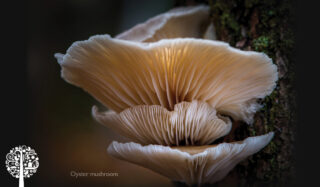
Other than Oysters, many other mushrooms have statins present. Lovastatin, a familiar name, is the natural form of statin that occurs. These include Chanterelles, Shiitake, Honey mushrooms, Hypsizygus (one of the Japanese Shimeji group of mushrooms) and the common white button mushroom. It is thought that both osteoarthritis and cardiovascular disease may be age-related and that statins may be involved in helping with those diseases. Statins are also known to help prevent non-alcoholic fatty liver disease and the metastasis of cancer cells by inhibiting the activation of blood supplies to the tumour.
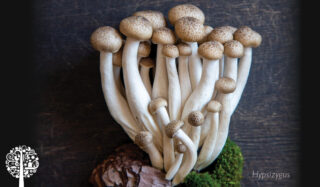
Vitamin Production
Another path we share with fungi is the ability to produce both Vitamin D and Melanin when exposed to sunlight. Mushrooms produce high amounts of vitamin D when exposed to sunlight. A study in Japan measured the amount of vitamin D produced by 100 grams of fresh Shiitake exposed to sunlight for an hour. The vitamin D produced was over 100,000 iu. It appears that this process applies to all mushroom fruiting bodies though not all individuals have been measured. The type of Vitamin produced is D2, which seems to be similar to D3, except its active life is shorter. In tests through large cohorts on Covid 19, Vitamin D2 prevented 28% more infections than the control group, though D3 produced slightly lower Covid death rates.
Fungi and Melanin
Mushrooms also produce melanin when exposed to sunlight. Mushrooms appear to tan in the same way we do. You can notice this with young Morels that turn blacker as they grow and are exposed to more sunlight. Other edible melanized mushrooms are Black Trumpets, Chaga and Auricularia – the wood ears. It is speculated that this is how mushrooms deal with the gamma radiation from the sun. Some research shows mushrooms feed on the process, taking electrons out much as plants do with chloroplasts during photosynthesis. Certain melanized fungi have been found growing around the radioactive waste at Chernobyl, not “in spite of” the radioactivity but because of it. A study is happening at the University of Saskatchewan using these melanized fungi to neutralize radiation exposure. Melanins have long been known to act as free radical scavengers and are potent antioxidants.
Mushrooms are Medicine
For many ancient cultures, mushrooms were not looked at as a food source, but there was no hesitation to expend calories to collect and trade them as valuable medicines. Research is ongoing across the fungal Kingdom as we try to understand why fungi do what they do and make complex chemicals like statins or even psilocybin. Most of these are secondary metabolites, meaning they are not essential for growth but play specific roles in the fungal life cycle and their interactions with all the life around them. If not, then evolution would have likely diminished these functions over the millennia. Deeper dives down infinite warrens into individual mushrooms, and the fungal organisms they spring from reveal more specific chemistry and biological activity. This discussion was to look at the general shared activity across most of the fungal Kingdom, which makes all mushrooms medicinal.
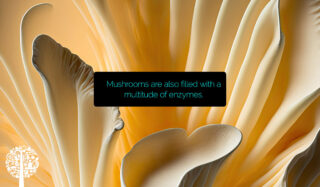
Enjoyed your article, very readable. Have you published any other articles since February 2023?